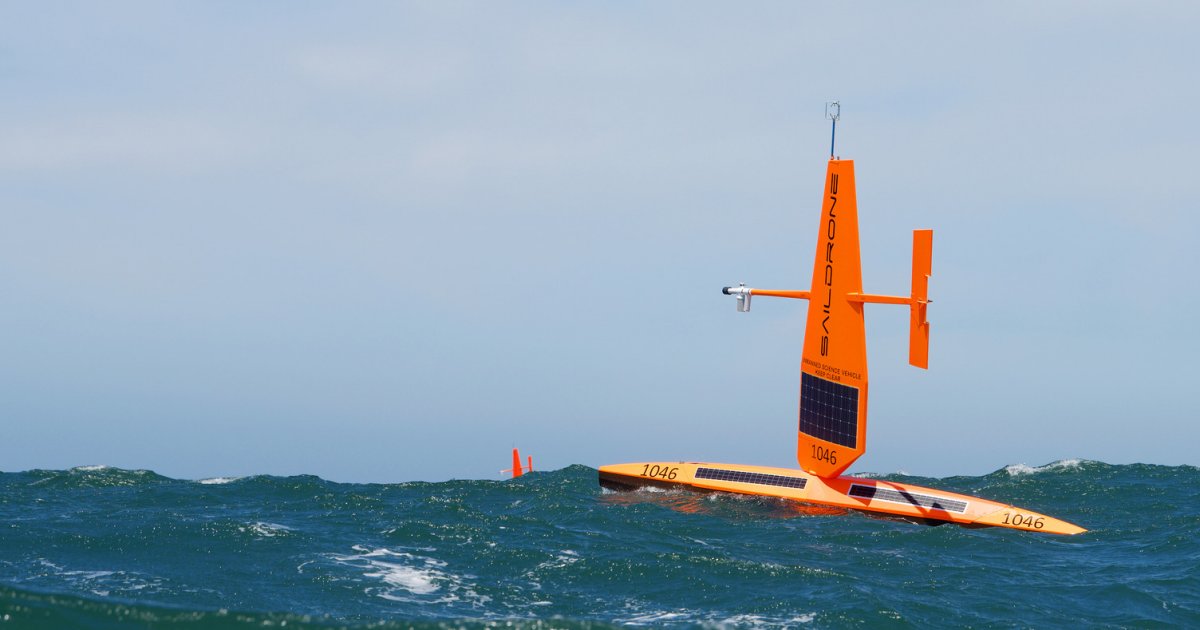
A solar and wind powered uncrewed surface vehicle (USV) has passed a dangerous test of its capabilities with flying colours.
Saildrone combines wind-powered propulsion and solar-powered meteorological and oceanographic equipment to perform long-range data collection missions autonomously.
The USVs can travel at an average speed between two to six knots under wind power. What SailDrone may lack in speed, it makes up for in endurance as it can undertake missions of up to 12 months without having to return to shore for maintenance and refueling.
There are actually three models – Explorer, Voyager and Surveyor, ranging in lengths from 7m long to 22m. But it’s only the Explorer that is purely solar and wind powered, enabling year-long mission lengths. I haven’t been able to find any information on how much solar power capacity is installed and while there appears to be also battery storage involved, specs on were likewise unavailable.
Saildrone Explorer can be configured to carry all sorts of equipment measuring wind speed and direction, air temperature and humidity, barometric pressure, salinity and much more. Among its previous missions was an Antarctica circumnavigation that saw the USV cover more than 22,000 kilometres in 196 days; surviving freezing temperatures, huge waves and 128 km/h winds.
But the wind conditions in that journey were a fresh breeze compared to a more recent mission.
Into The Eye Of A Hurricane
The USA’s National Oceanic and Atmospheric Administration (NOAA) recently sent its Saildrone Explorer SD 1045 into the guts of Hurricane Sam, a category 4 hurricane that was packing winds of more than 193 km/h and generating waves up to 15 metres high.
Equipped with a specially designed “hurricane wing,” the Saildrone appeared to perform perfectly and achieved a world-first. SD 1045 captured the following video from inside Hurricane Sam.
The video isn’t doing the situation justice, but certainly makes it clear it was a very dangerous scenario.
SD 1045 is one of five Saildrones that have been operating in the Atlantic Ocean during this hurricane season. The data the USVs gather will help further understanding of how hurricanes work, and that should improve forecasting and therefore save lives through better disaster preparation.
Saildrone Founder and CEO Richard Jenkins said this mission was a last frontier conquered.
“Saildrone is going where no research vessel has ever ventured, sailing right into the eye of the hurricane, gathering data that will transform our understanding of these powerful storms,” he said. “We are proud to have engineered a vehicle capable of operating in the most extreme weather conditions on earth.”
Saildrones have also been deployed in Australian waters in a project back in 2018 carried out in partnership with CSIRO. Among the activities were measuring and monitoring sea-surface temperature, salinity, ocean carbon, and plant and animal life off the coast of Gippsland in Victoria. But it also had a troubling aspect – to test and validate technologies for potential future carbon capture and storage (CCS) projects.

 RSS - Posts
RSS - Posts



Speak Your Mind